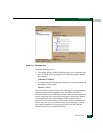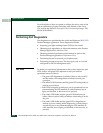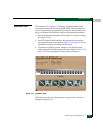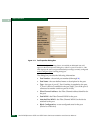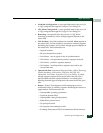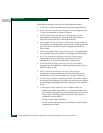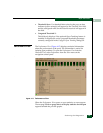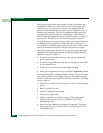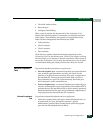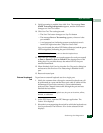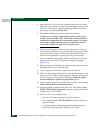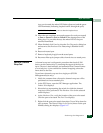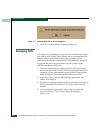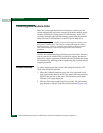
4
Performing Port Diagnostics
4-29
Repair Information
• Clear link incident alerts.
• Reset the port.
• Configure Port Binding.
When a port is selected, the bottom half of the Performance View
displays the following tables of cumulative port statistics and error
count values. These statistics correspond to values defined in the
Fabric Product management information base (MIB).
• Traffic statistics.
• Class 2 statistics.
• Class 3 statistics.
•Error statistics.
Click Refresh to update statistical information displayed on the
Performance View for the selected port. Click Clear to display a dialog
box that allows you to choose to reset the cumulative value counts to
zero on the Performance View for only the selected port or for all ports.
A confirmation dialog box displays before the values are cleared.
Perform Loopback
Tests
This section describes procedures to perform an:
• Internal loopback test - an internal loopback test checks internal
port, serializer, and deserializer circuitry and checks for the
presence of an SFP, but does not check fiber-optic components of
the installed SFP. The test can be performed with a switch or
device attached to a port.The test momentarily blocks the port
and is disruptive to the attached device.
• External loopback test - an external loopback test checks all port
circuitry, including fiber-optic components of the installed SFP. To
perform the test, the attached switch or device must be quiescent
and disconnected from the port, and a multimode, singlemode, or
wrap plug must be inserted in the SFP receptacle.
Internal Loopback
Test
To perform an internal loopback test for a single port:
1. Notify the customer that a disruptive internal loopback test is to
be performed on a port. Ensure the customer’s system
administrator quiesces Fibre Channel frame traffic through the
port and sets the attached devices offline.



